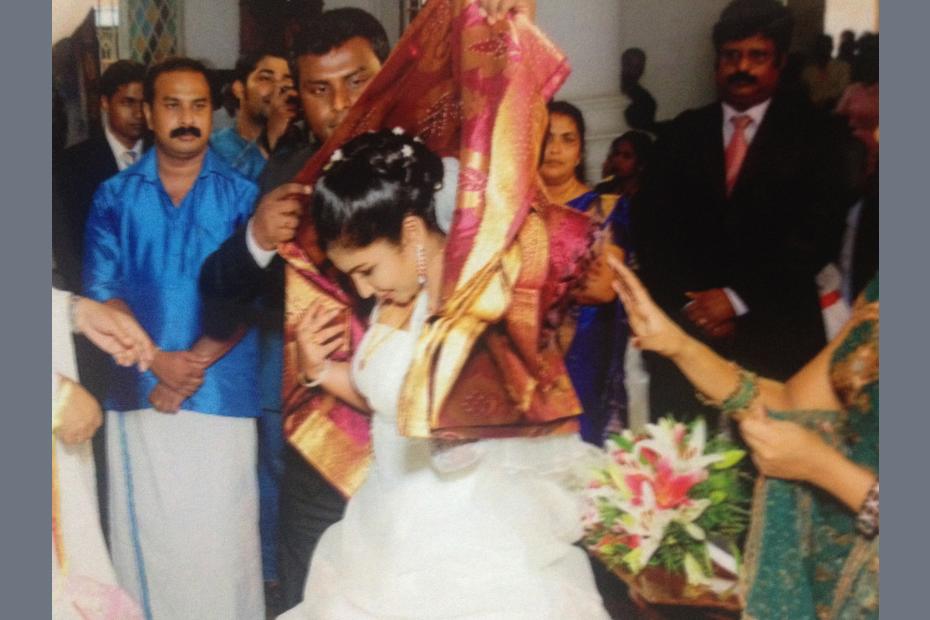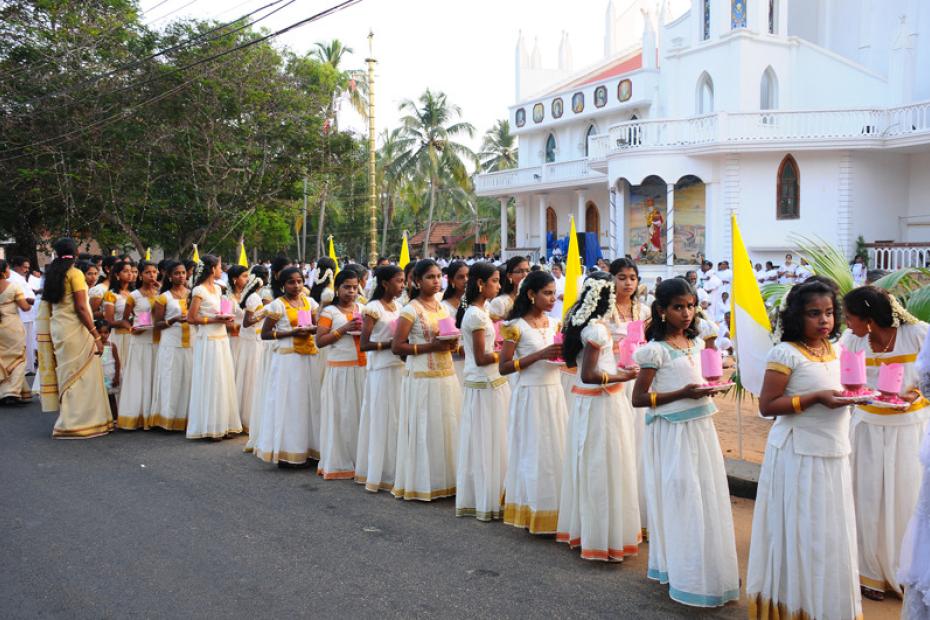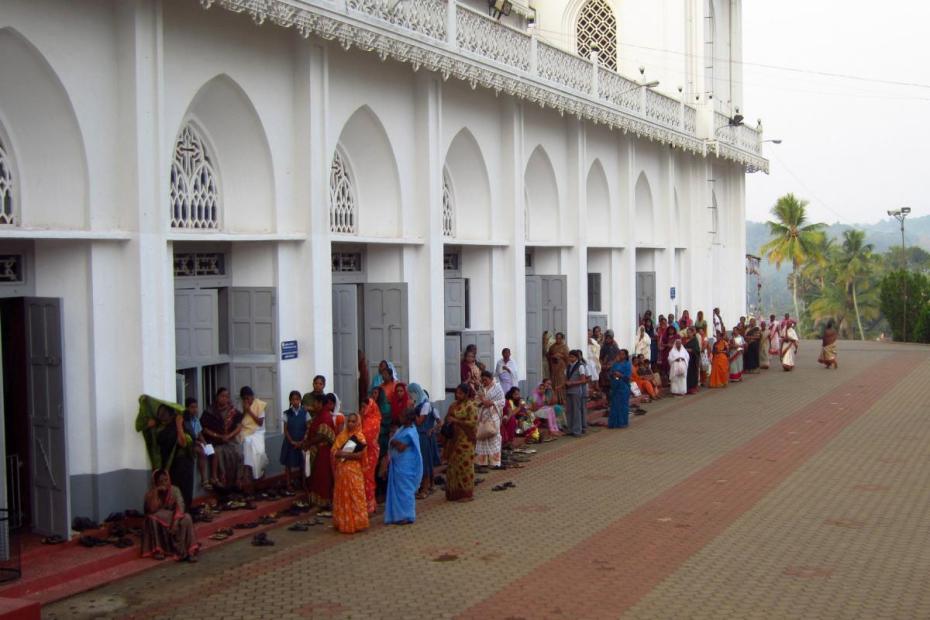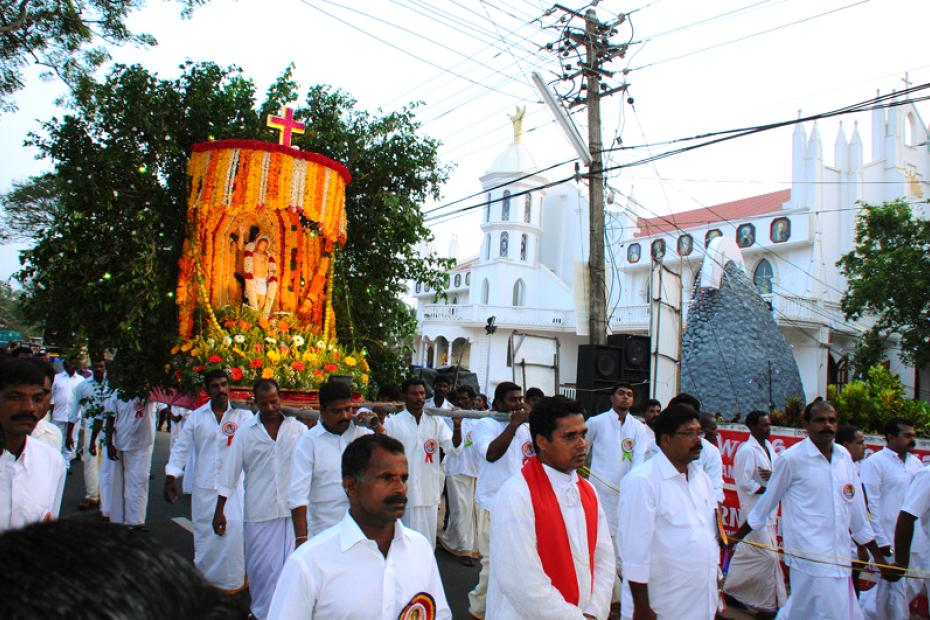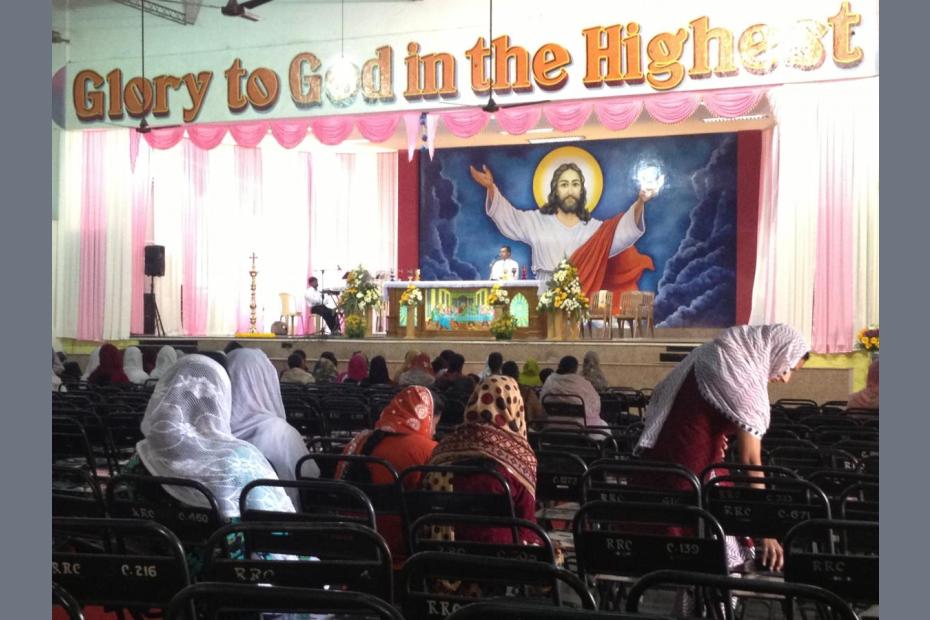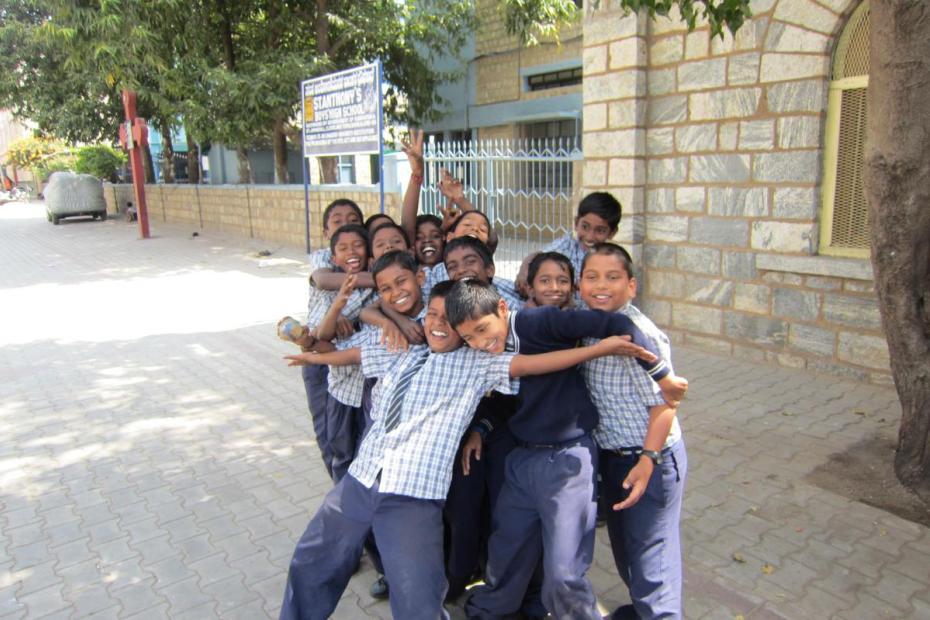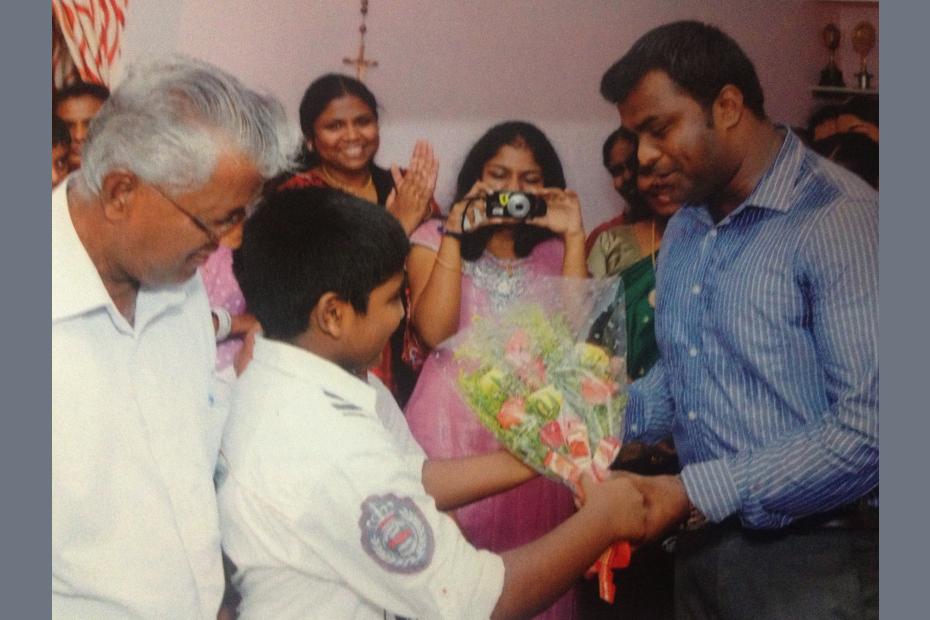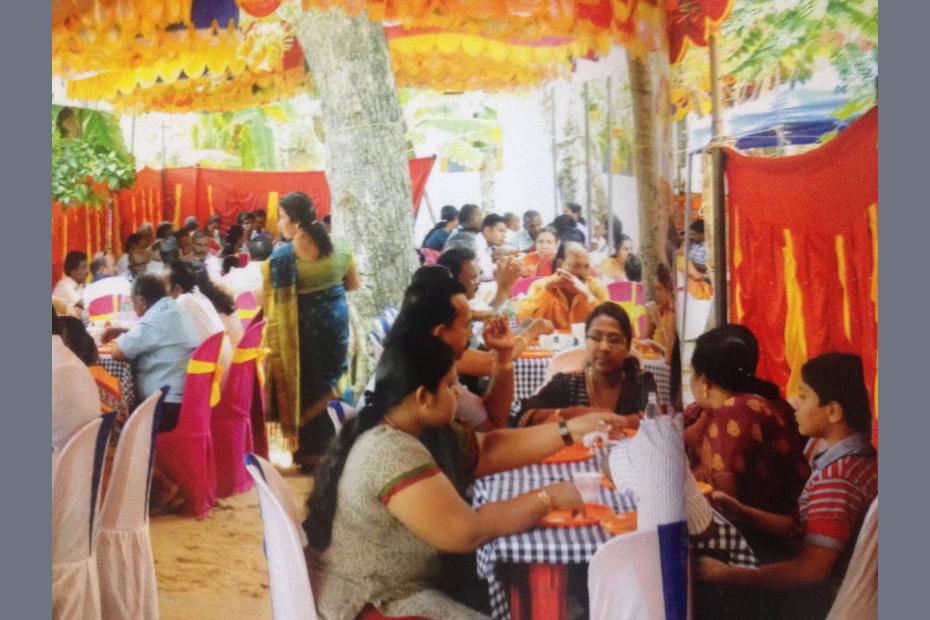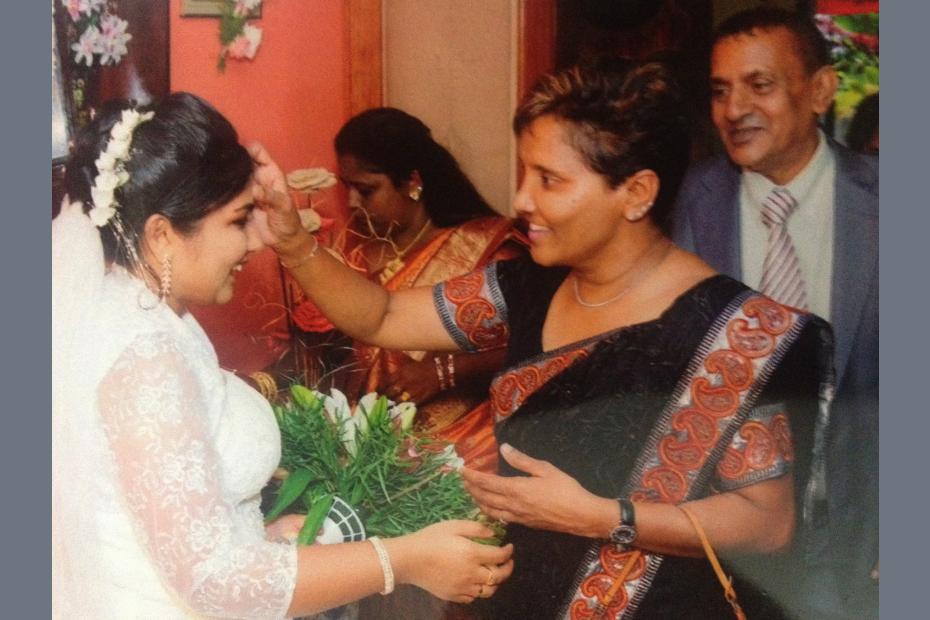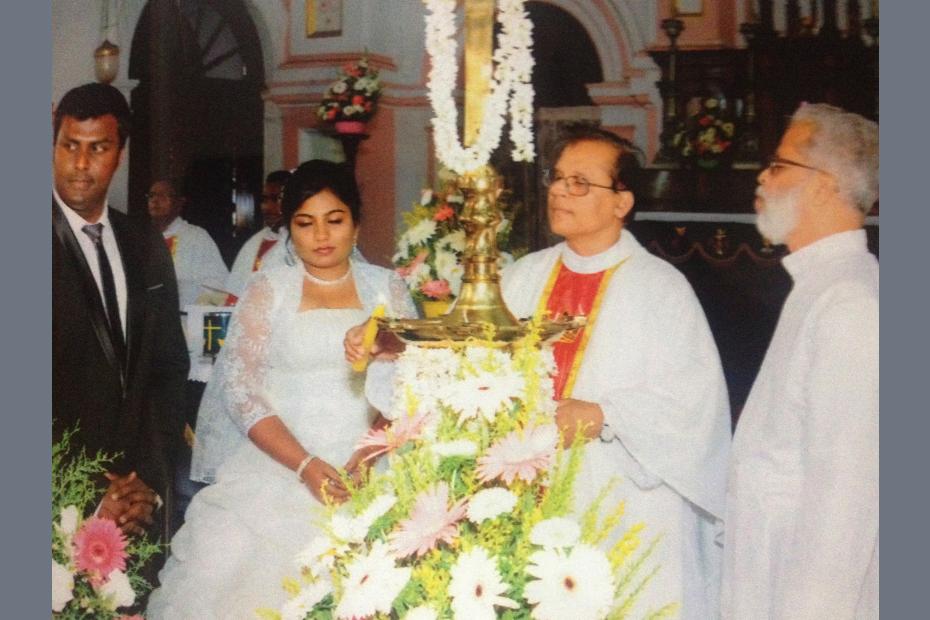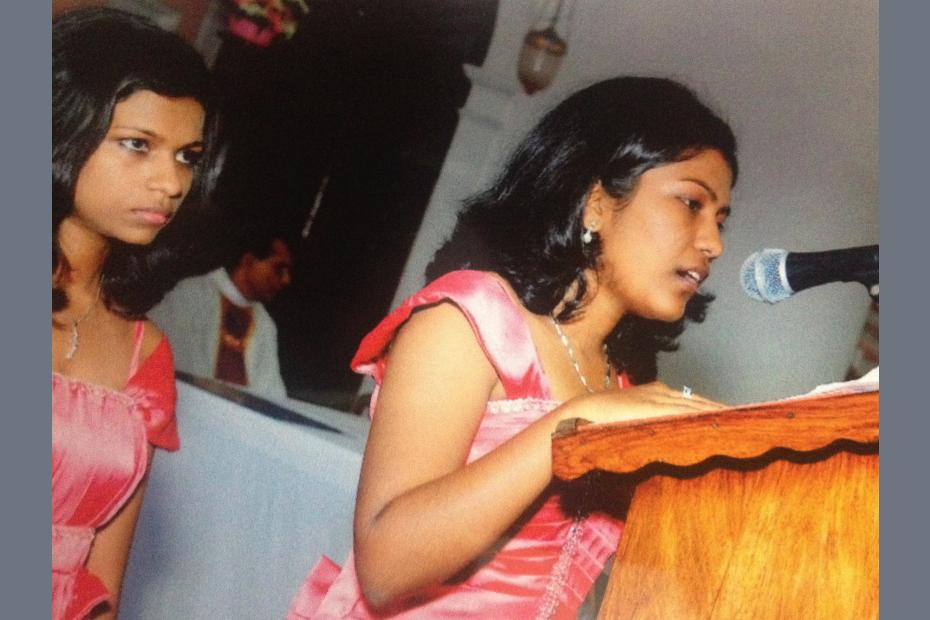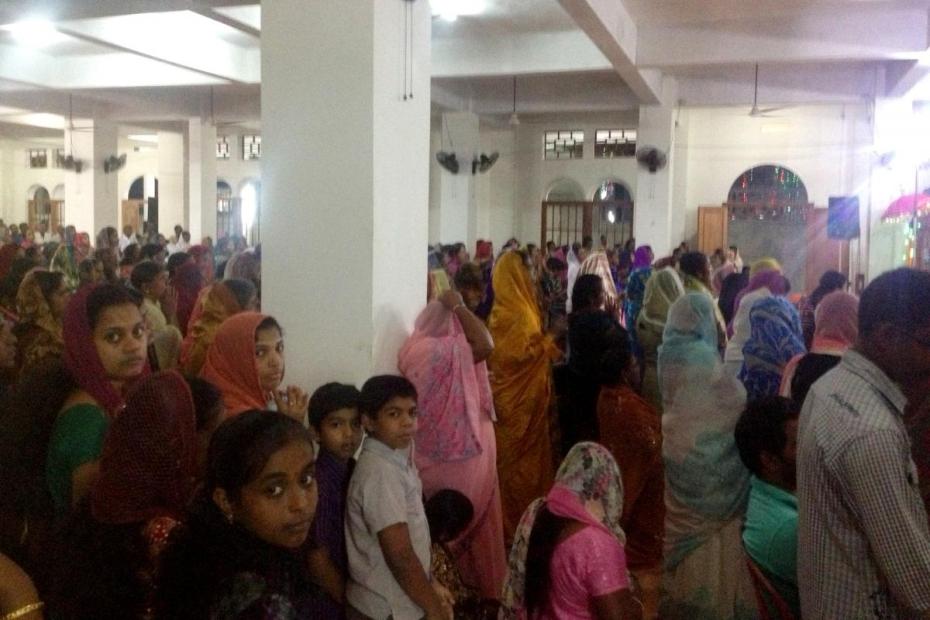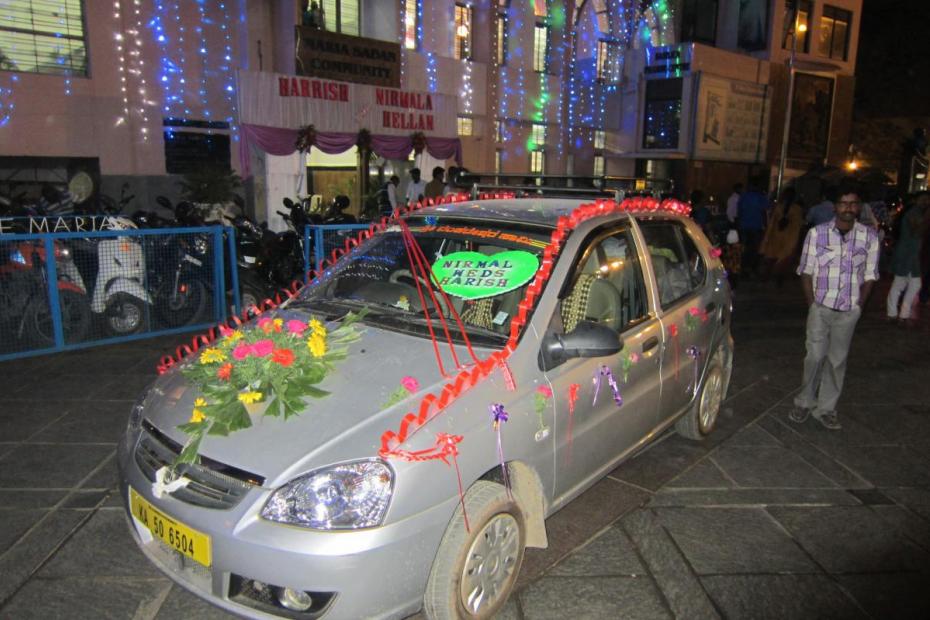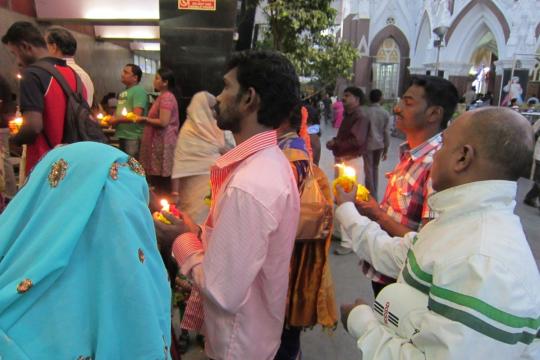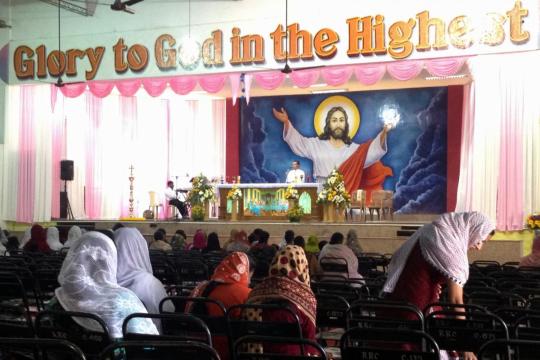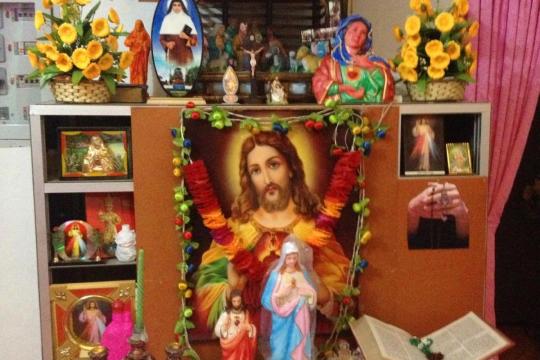The family is an enormously important—some say all-powerful—social institution in India. Where geographic mobility has increased, and where striving and middle class Indians have become more focused on higher education as a means of advancement, older norms are shifting, but family is still a powerfully cohesive and determinative force in people's lives, and marriage is seen as an alliance between two families, not just two individuals. Multigenerational families are the norm, and beyond that, extended family networks can be quite influential. First and second cousins are traditionally addressed as brothers and sisters.
Purity is an important theme in Indian religion, including Indian Catholicism, and sexual purity is a significant part of that. Guarding the purity of spouses and children is seen as very important, and families take the primary role in overseeing each other to make sure that happens.
Physical touch is extremely important, not only for devotees at statues, but in friendships in daily life. One frequently observes persons of the same sex, whether friends or family, holding hands or touching one another in public in ways that would seem startling to many westerners. At the same time, married couples are discouraged from making public displays of affection, even at home with family.
Even though Indian Christians speak of the family as the central institution of Indian social life, Catholic families tend to be small. Family planning is the norm, and Indian Catholic families tend to be smaller than a generation ago—smaller than Hindu families, and much smaller than Muslim families. Studies in the 1980s and 1990s showed that in Kerala, Christians had nearly the lowest fertility rates of any religious group.1 There is some evidence that because Syrian Christians are aware that their numbers are shrinking in light of family planning and migration, they are having slightly larger families, with three children as a norm. In at least one diocese, the bishop will visit to baptize a fourth (or greater) child born to a family, and Catholic school fees will be waived for that child. Still as of 2019, the government is working to limit the size of families, taking away benefits from families, particularly from government workers, who have more than two children. Strong preference for girls over boys has created a demographic imbalance in India, one that many Church organizations work to undo. It is not clear to what degree that imbalance exists among Catholics.
Marriage
Young people generally wait until their mid- to late-20s for marriage. Christian women have the highest age at marriage of any religious group.2 Young Indians often value a greater degree of romance and choice, but even then there is significant pressure to negotiate a marriage through and between families. Trusted intermediaries also take on such roles for families. Marriage outside of caste, and marriages to romantic matches are largely an upper class prerogative.
A page of ads from the Renewal Voice magazine of the Renewal Retreat Centre, Bangalore, gives some insight into the kinds of qualities that families and young people see as significant for a potential spouse. Educational degrees and employment are important, as are languages spoken (Malayalam, Kannada, Tamil, English), Christian affiliation (Latin Rite, Syrian rites, Orthodox, etc). The boy is expected to be slightly older than the girl. Families negotiate the terms, and though discouraged by the Church, dates are sometimes chosen on the basis of astrological consultation to ensure an auspicious time.
Catholic weddings feature lots of music, but no dancing.
In the audio interview on this page, Jubi, a recent bride, talks about her engagement party and wedding. The emphasis of most of the events she highlights have to do with each family welcoming bride and groom into the other, and symbols of that process. Some photos from that wedding are also featured here.
At the end of the wedding, the bride is expected to move in with the husband's family, where she will have a secondary status compared to her mother-in-law, and even to her sisters-in-law.
Family and Marital Discord
Clergy and others who counsel families say that the problems that people bring to them are seldom framed as personal ones, but as ones that are problems precisely because they impact the family. State divorce laws in India actually differ according to the religious community the petitioners belong to, Hindu, Muslim or Christian. The law for Christians requires a year's separation, often with counseling, and limits the grounds for divorce. Interviewees in South India said that divorce had become surprisingly common (if complicated) for middle- and upper-class Indians, but that among the poor in villages, many couples just live separately, coming together for family marriages, etc. Couples may wait to divorce or separate so that it does not undermine their children's chances of securing a desirable match.
The elderly
Households in India tend to be intergenerational. Deference to family elders is expected to overrule personal preference, and it is a stereotype that the mothers-in-law may rule the house even of a son and daughter-in-law.
Writing about Christians in Kerala, the demographer K. C. Zachariah has noted, “Traditionally, the Christian churches have been more concerned with children and the youth than their elderly… The situation is understandable when more than 40 percent of their members are children and less than 4 percent only were elderly.” Very soon, however, one-quarter of the population will be elderly, which will call for new services.3
- 1K. C. Zachariah, The Syrian Christians of Kerala, Demographic and Socio-Economic Transition in The Twentieth Century. (Hyderabad: Orient Blackswan Pvt., 2006), 17.
- 2Ibid.
- 3K. C. Zachariah, The Syrian Christians of Kerala: Demographic and Socioeconomic Transition in the Twentieth Century, (working paper, Center for Development Studies, Thiruvananthapuram, November 2001), 6-7.
